Are you looking for a sewing machine presser foot that is ideal for satin, applique, and decorative stitches? You need to get satin stitch presser feet.
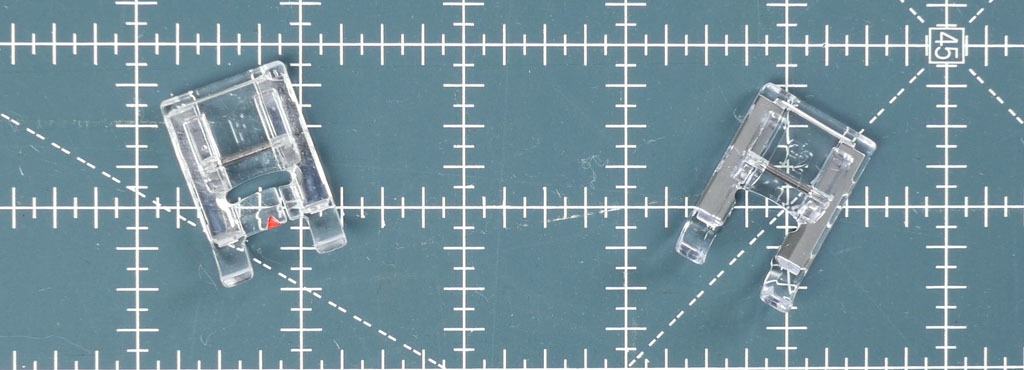
Let's Look At Satin Stitch Presser Feet
Let's take a peek at these awesome feet. The satin stitch foot is ideal for satin and decorative stitches because it has a tunnel, or groove, underneath the foot. This accommodates the extra thickness of the thread when sewing these bulkier stitches. Oftentimes, an open toe satin stitch is available, as well. This too has a groove underneath the foot; however, the front of the foot is open. The open toe satin stitch foot is great for applique. The open front gives greater visibility.

What Is A Satin Stitch?
You may have heard the term 'satin stitch' and have wondered, "What is a Satin Stitch?" All it really is is a zig-zag stitch done really close together. Just note that if your sewing machine manual doesn't specify a satin stitch, that doesn't mean that you can't do it; you simply need to select a zig-zag stitch and decrease your stitch length. With the decreased stitch length, the zig-zags are close together. If you increase your stitch length, it just looks like a regular zig-zag stitch. Play around with the stitch length to achieve the look that you are going for.
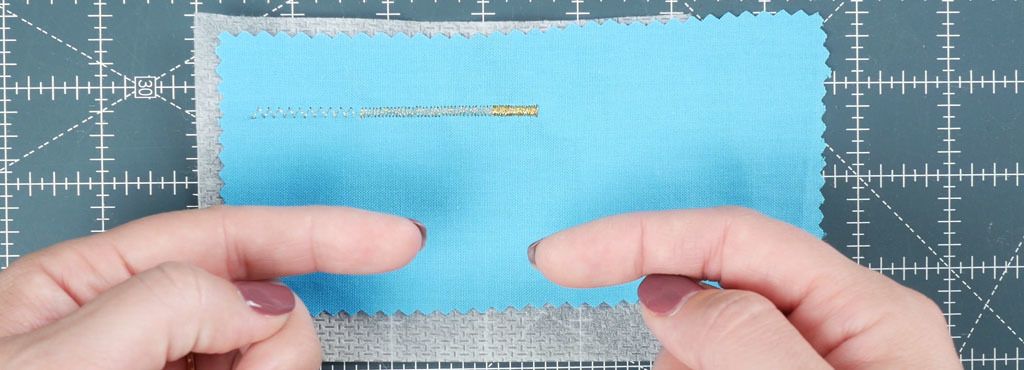
How To Get A Nice Satin Stitch
If you will be sewing satin stitches or decorative stitches, especially when sewing on satin fabric, it is beneficial to use a stabilizer. A little bit of stabilizer really helps to produce nice results.
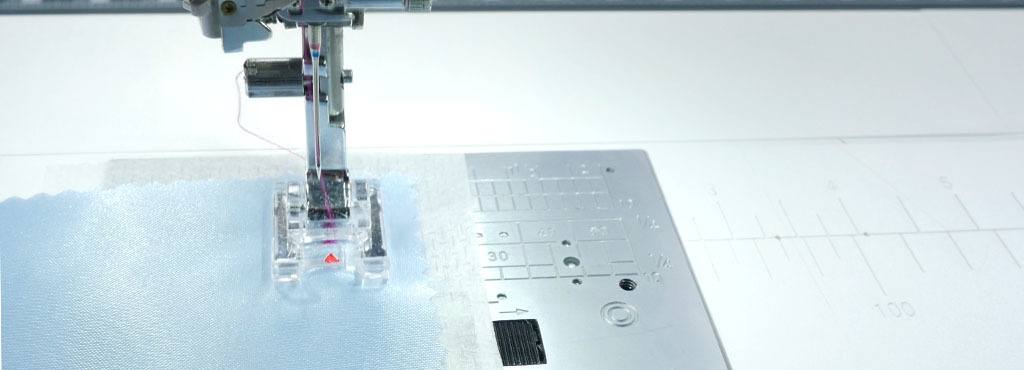
Using Metallic Thread With A Satin Stitch Foot
A fun application when doing decorative satin stitches is using metallic sewing machine thread. It is so pretty and shiny. When using metallic thread, make sure that you use a metallic sewing machine needle; I like a size 14. A metallic needle has a large eye to make threading easier. It also has a large groove to prevent shredding of the delicate metallic threads during stitch formation. It is recommended to use a lightweight bobbin thread, such as 80 weight, when sewing with metallic thread; however, I have found my machine likes a 50 weight. This just ensures that your upper thread won’t fight for tension. This also reduces bulk. Always test on scraps prior to working on your project so that you can get the correct settings/thread weight before moving forward. Once again, the groove on the bottom of the satin stitch foot makes this so easy and fun since the bulkier stitches won't get stuck or jammed. That groove under the foot is genius.
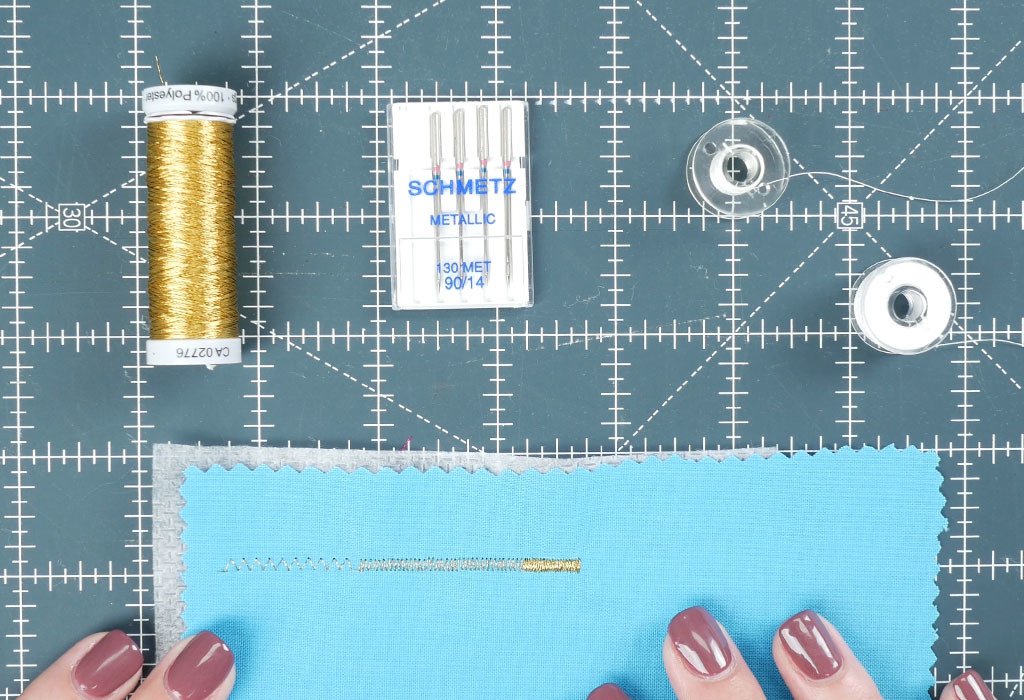
How Would You Use a Satin Stitch Presser Foot?
Can you think of an application where this presser foot would be useful to you?
Using a Satin Stitch Presser Foot for a Scalloped Edge
For another example, you can do a scalloped edge. When doing decorative stitches, I prefer a thread that has some shine to it. I just think it looks a little fancier. Here, I’ve used Madeira Polyneon Thread. It has a nice vibrant sheen to it, but it’s easy to work with. Regardless of the thread you choose, once again, always test on some scraps before moving forward with your project. Once you’ve completed your scalloped edge, you can take use your small embroidery scissors and cut around the design. You can have a lot of fun with these stitches.

Using a Satin Stitch Presser Foot for Applique
You can also use the satin stitch foot for applique. The open toe satin stitch is preferred in this application. As you can see, that open front really makes it easier to see what you are doing. Pair it with the Acorn Precision Piecing Products and you will have stress free fun.
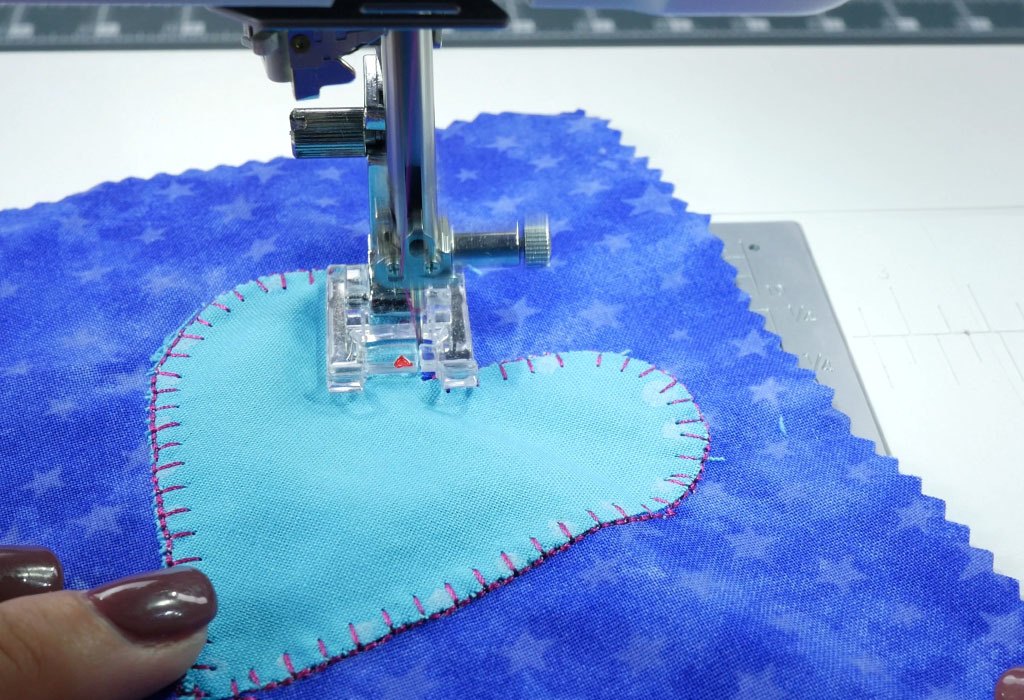
I hope that you enjoy this presser foot as much as I do. Until next time, Happy Sewing, Everybody!








